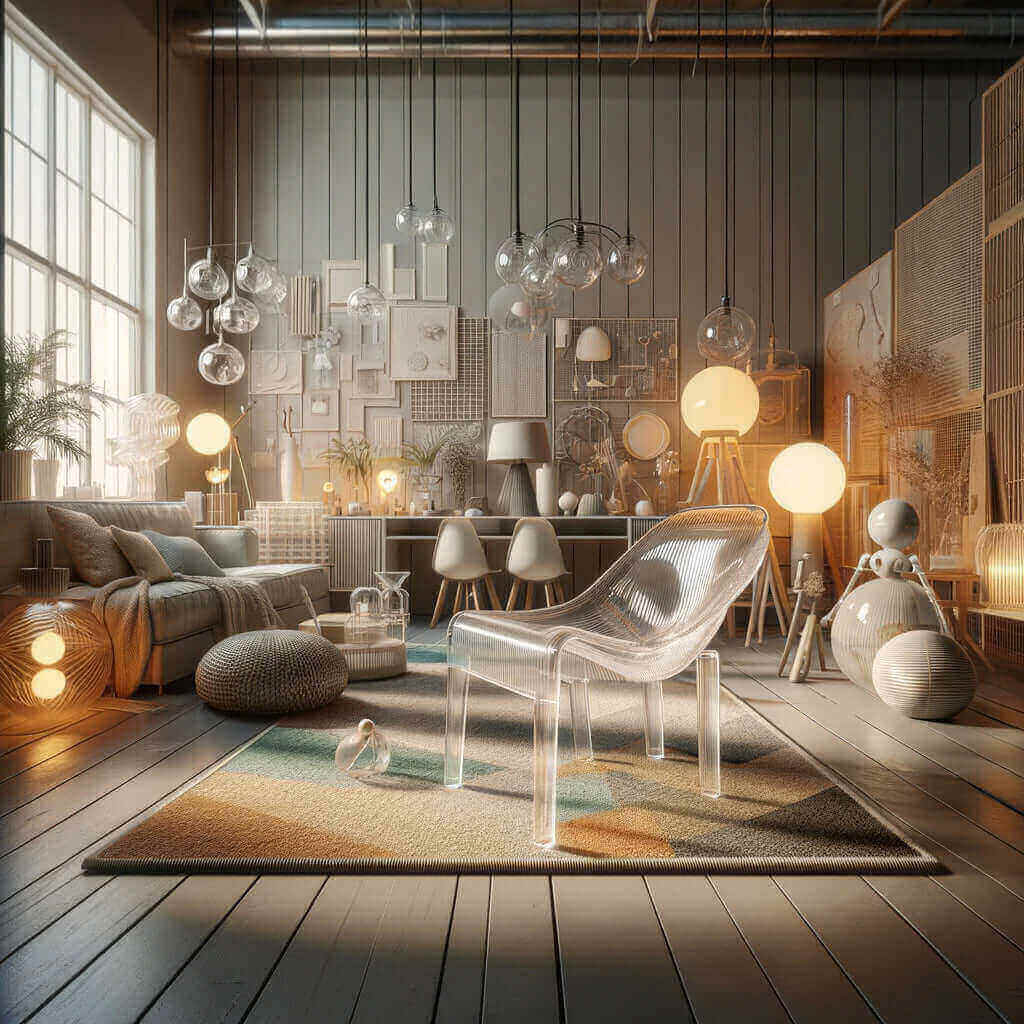
The Renaissance of Plastic in Interior Design: A Sustainable Approach
|
|
Time to read 2 min

Discover new arrivals in modern lighting, home decor, and Scandinavian design—updated weekly...
|
|
Time to read 2 min
In the domain of interior design, the phrase "plastic is fantastic" resonates now more than ever. Once stigmatized for its environmental impact, plastic is undergoing a renaissance as designers embrace innovative, eco-friendly variants. This versatile material, with its myriad of types and uses, has become a cornerstone of modern design. This article will navigate through the different types of plastic used in interiors, weigh their pros and cons, delve into the latest trends such as organic plastics and recycling initiatives, and pay homage to iconic plastic creations.
The realm of interior design has long embraced plastic for its versatility, and the spectrum of its applications is truly vast. Polyethylene, a type of plastic known for its soft texture, has become a staple in homes in the form of fluffy area rugs that provide comfort underfoot, while its more rigid forms grace kitchens worldwide as sleek, durable countertops. On the higher end of the spectrum, polycarbonate shines in its role, literally and figuratively. This sturdy material withstands high temperatures and impacts with ease, making it a go-to choice for designer furniture and avant-garde light fixtures that push the boundaries of aesthetic norms. Acrylics, with their crystal-clear appearance, infuse a touch of elegance into tableware and decorative items, mimicking the look of glass without its fragility. Vinyl, on the other hand, offers unparalleled resilience, acting as a stalwart guardian against scuffs and moisture in wallpapers and flooring, ensuring longevity and ease of maintenance.
The utility of plastic in interior design is multifaceted. Its intrinsic malleability paves the way for a boundless array of forms, textures, and hues, unleashing the full spectrum of design innovation. This adaptability makes plastic a beloved material among designers aiming to craft unique and expressive living spaces. Its robustness and ease of care are other feathers in its cap, affording homeowners the luxury of longevity without the constant worry of upkeep, especially in areas prone to wear and spillage. Plastic’s lightweight nature also contributes to its appeal, simplifying the logistics of furniture arrangement and transportation. Moreover, the cost-effectiveness of plastic opens the door to stylish interiors without the hefty price tag, democratizing design excellence.
However, plastic's narrative isn't without its blemishes. The environmental toll of traditional plastics is a growing concern, highlighting issues in both the manufacturing process and the disposal phase, where plastics contribute to landfill mass. The emission of volatile organic compounds (VOCs) from certain plastics is another serious concern, as these emissions can compromise indoor air quality and health. Thus, the design community is tasked with a significant challenge: to harness the functional advantages of plastic while curtailing its environmental footprint.
In response to environmental concerns, the industry is riding a green wave toward a more sustainable future. The advent of bio-plastics marks a significant shift towards eco-conscious material choices. Derived from renewable resources like corn starch, these plastics are carving a path away from petrochemical dependence. Moreover, recycling efforts are transforming the lifecycle of plastic products. By reprocessing waste into new, functional items, the industry is not only reducing the volume of waste but also championing a model of circular economy that celebrates resourcefulness and innovation.
In the pantheon of design, certain plastic creations have achieved iconic status. The Eames Molded Plastic Chair is a paragon of design, symbolizing the fusion of form and function that has become a hallmark of modern furniture. Kartell's Componibili storage units further exemplify plastic's ability to marry utility with aesthetic appeal, featuring a modular design that has captivated users since its inception. These timeless pieces continue to resonate within the design community, serving as both inspiration and testament to the enduring legacy of plastic in shaping our living environments.